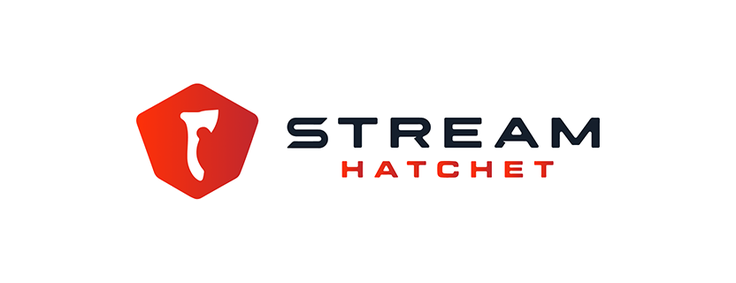
The video game industry and esports connect companies with a demographic that’s difficult to reach: the millennial male with a higher than average income. Traditionally, companies used real-world sports to reach this demographic, but brands now turn to sponsoring competitions, advertising on live streams, and other non-traditional strategies to tap into this market.
This shift occurred for a few reasons:
- Some esports events, such as the League of Legends championships, actually draw larger audiences than the Super Bowl.
- 2.7 billion people worldwide play video games.
- The video gaming industry is a $159 billion market.
- The pandemic disrupted traditional sports and entertainment media, leading to weekly live streaming hour increases of 81 percent over the past year, with tens of billions of hours watched. 355 million of these hours were sponsored live streams.
One thing that has held game publishers and brands back from getting the most out of live streaming and esports was a lack of data. They need to know the best live streaming platforms to reach their target audiences, when they should stream, what games and genres to select, how long the stream should be, and dozens of other choices that make a big difference in ROI.
Two gamers, who were software developers by trade, founded Stream Hatchet right after university to fill this gap in the market.
Building a Leading Video Game and Esports Analytics Solution
Stream Hatchet started in 2015 in Barcelona, Spain. Eduard Monsterrat, now CEO, and Albert Alemany, now CTO, created the platform as a passion project and turned it into a successful B2B data intelligence company.
The first iteration of Stream Hatchet was developed as a tool for individual streamers to monitor their streams and better interact with viewers, as Twitch’s built-in dashboards were lacking. They didn’t know if they were gaining viewers, followers, or subscribers. The main goal of the original dashboard was to promote real-time interaction.
A few years after Stream Hatchet’s founding, the company had gone through an accelerator program, acquisition, and an expansion into the United States. When the US team came on board, the platform transitioned from B2C to B2B gaming and esports live streaming analytics. A new set of tools was introduced to Stream Hatchet, and the most important of these was the esports dashboard.
Alemany explained, “There are plenty of tournaments being played every day, such as competitive League of Legends and Fortnite. We have this tool that allows our customers to check this data. Which teams are playing? What channels are broadcasting? What viewership are these tournaments getting?”
“They can monitor how they’re doing and better optimize schedules around when it’s best for them to stream those leagues. Is it on Mondays at a specific time, or on one afternoon on the weekends? They can see what other leagues are running at the same time to optimize around that data.”
The Stream Hatchet platform delivered a comprehensive range of purpose-built esports and live streaming analytics features and benefits to its users, including:
- Standardized cross-platform measurement data between different live streaming platforms.
- Five years of historical data to analyze past trends and performance across all genres, games, events, and channels.
- Brand lift analysis to rank category performance.
- Influencer targeting, ROI analysis, and strategy.
- Sponsored campaign analysis.
- Independent third-party source for live streaming data.
- Competitive analysis of other influencers.
- Enhanced audience data.
- White-labeled and custom business intelligence dashboards.
- Aggregated dynamic data.
- Data from millions of global streaming channels and 20 of the top streaming platforms.
- API access for customers to integrate trusted live streaming data into their own dashboard solutions.
The Difficulties of Processing Highly Complex Live Streaming Queries
The technology supporting Stream Hatchet needed to do a lot of heavy lifting to deliver the expected functionality and analytics performance. The team started with MySQL on AWS RDS, but over the past two years, the real-time functionality wasn’t there. While the data ingestion scale wasn’t large, the queries were highly complex and ran into major speed issues.
“It was getting challenging to satisfy the use cases that our clients wanted to achieve, especially our bigger clients like Riot Games and Activision Blizzard. It wasn’t working for their data scientist teams to sit for one or more minutes each time they applied different filters,” said Alemany.
Hundreds of customers ended up complaining about slow queries in their custom esports dashboards. The poor dashboard performance threatened Stream Hatchet’s potential growth and impacted its revenue.
The challenges of working with this esports data came in many forms:
- A single query may aggregate many gigabytes of data.
- Some database solutions are poor fits for working with time series data, which is predominant in esports.
- Both real-time and historical data were needed to provide the full live streaming context.
- Customers wanted to compare macro-level trends by game, publisher, league, and region across multiple streaming platforms.
- Minute-by-minute granularity was necessary to provide the full context of the live streaming data.
The front-end esports dashboards were created with Javascript Meteor, and the API was built with Express on AWS. The Stream Hatchet team experimented with many other solutions to power the back end, including:
- AWS Athena
- AWS Timestream
- Elasticsearch
- MongoDB
- Multiple SQL versions
- MySQL on Google Cloud Platform
“We were surprised to see that not even some in-memory versions of MySQL were able to do the aggregations we were doing,” said Alemany.
Stream Hatchet also used AWS EC2 for enriching the esports data, and MySQL on AWS still powered other services that had lower performance requirements. The platform had an increasingly complex infrastructure that still wasn’t meeting customer demands, even as it took more resources to operate.
“The tool was not functional anymore, so we started looking for solutions,” said Alemany.
The new database solution for Stream Hatchet needed to fulfill the following technical requirements:
- Wire compliant with SQL, so the team didn’t need to change the entire back end or redesign the APIs
- Capable of working with 1,000s of Time Series data points in complex aggregated queries
- Fast analytics speed
- Support for 10s of concurrent users globally
- Multiple table lookups and joins
- Accept writes from external applications
- Support for data sourced from third-party fact tables and manual metadata entry
Increasing Query Speed and Reducing Infrastructure Complexity with Singlestore Helios
Stream Hatchet found SingleStore by searching for in-memory SQL engines and databases on Google. Singlestore Helios is the fully-managed, on-demand cloud database service for fast analytics on any public cloud environment. This Cloud Database as a Service solution delivered instant, effortless access to SingleStore’s best-in-class speed, scale, and agility.
Stream Hatchet selected Singlestore Helios over the self-managed database as it was the easiest solution and had a competitive database cost. Alemany explained, “It didn’t make sense for us to maintain infrastructure when the cost SingleStore was offering was very competitive. It was a clear decision for us.”
SingleStore features that make it an excellent choice for video game analytics include:
- Unified database designed for fast analytics on any data, anywhere.
- Fast analytical queries across large, dynamic datasets with high concurrency.
- Accelerated speed of dashboards to create Fastboards.
- Super low-latency, blazing-fast queries.
- No need for multiple purpose-built data engines.
Implementing Esports Analytics on Singlestore Helios
SingleStore’s SQL Wire Compliance made it easy for Stream Hatchet to set up a proof-of-concept. The team used a subset of all esports data and took approximately two months to move into production following an intensive testing phase. However, they saw performance improvements starting at the two-week mark. The implementation was smooth, and SingleStore’s team assisted with configuring queries, setting up data ingestion, and helping Stream Hatchet explore potential use cases.
Stream Hatchet configured Singlestore Helios to handle real-time and historical esports data for powering internal and customer dashboards, query data, and report generation.
Ingested data was split between manual, automated, and third-party sources:
- Manual metadata: The Stream Hatchet team captures and inputs esports event data, such as the channels broadcasting, match schedules, and the events taking place. The metadata is enriched with audience data from live streaming platforms.
- Automated: This system looks at live stream titles and can detect possible esports events based on the information in the title. The platform automatically records this data for later review.
- Third-party data: Stream Hatchet works with a data provider that covers esports event and stream data, such as the exact time stamps teams are playing each other.
The schema design, cluster size, and infrastructure that Stream Hatchet used included:
- 4 primary fact tables
- Streams of 2 million records
- 20 static reference tables with 5,000 records each
- SSMS S0 with 4 vCPU, 32 GB RAM, 500 GB storage
What Stream Hatchet Achieved With Singlestore Helios's Help
“Before SingleStore, we had to work with different services on the backend for our weekly esports reporting. That created a lot of challenges to pull this data from different places and integrate it. Now that we’re only using SingleStore, it’s much smoother than before.”
The Stream Hatchet platform saw the following improvements:
- 2x improvement in esports report generation time.
- 10x increase in esports dashboard speed.
- Esports query response times are now measured in a handful of seconds at most, rather than minutes.
- Customers can now drill down minute-by-minute into the data to see what specific channels were doing at a particular minute, and look at the actual trends to understand spikes in viewership.
“We’re able to exploit much more of our esports data and extract more insights. Before SingleStore, we had to look at it from the surface because our back end didn’t allow us to go deeper. Now we can crunch the data in different ways in real-time that allows our users to extract insights and see things that they couldn’t before.”
What's Next for Stream Hatchet?
“Our goal is to expand the team, as we’re still very small, and tackle all the organizations we believe will benefit from esports and live streaming data.”
Now that the esports use case is in production, Stream Hatchet wants to expand Singlestore Helios usage to its other lines of business. The team can power multiple business units for under $400 per month. The team plans on migrating some of their other data offerings from MySQL on AWS RDS. They expect to see a 2-3x speed improvement with this implementation.
Stream Hatchet also wants to look at data differently in the future, implementing:
- Forecasting
- Sentiment analysis
- Machine learning
“For instance, one of the projects that we have in the pipeline is trying to detect the exposure of brands in streams. We’re trying to see the logos or the overlay banners that streamers set up in their broadcasts, with the goal of being able to say “Logitech was present in that many streams,” or “Was watched that many hours,” said Alemany.
Experience the ultra-high performance and elastic scalability of SingleStore on-demand. Contact us to learn more about Singlestore Helios or get started now with $600 in free credits.





